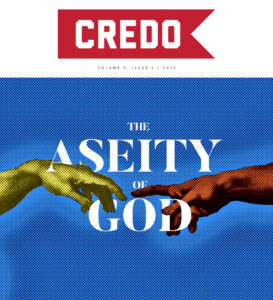Once while flying out of Atlanta on an annual mission trip to Honduras, accompanied by a few members of my rural Vermont church, I was struck by the sheer number of “missionaries” also on board. How did I know they were on their way to a short-term trip themselves? The matching T-shirts, of course. Bright pink neon. There were roughly forty of them scattered throughout the cabin, five times the size of our little group. I struck up conversation with one of them, a young man from the Midwest. This is what I learned:

He didn’t know many of the people he was traveling with. They were all volunteers traveling through a parachurch ministry that facilitates short-term trips to different needy regions. He wasn’t sure exactly where they were going or what they were going to do. They would be divided up onto teams once they arrived. He described the options, all a variety of construction or “soup pantry” type activities. He mentioned nothing overtly religious, nothing resembling evangelism. He mentioned no local church partnerships or knowledge that the sending organization had any relationship with any central church or series of churches.
I smiled outwardly but grimaced inwardly. I sat back and mused with self-satisfaction. Our group was smaller—though joining a larger team led by my father out of his church in the Houston area—and we were ongoing partners with the same church-planting pastor and his church. They set our agenda and organized our teams. We all knew each other and due to our long-term partnership with the pastor, whom my father has known and supported for twenty years, we knew plenty of folks in the local church(es) as well, including the previous pastors we’d served on our short visits. We funded their ministries throughout the year. When we came for short-term trips, we financially employed local workers not just to assist us but to lead us, with our crew as their assistants.
Yes, we certainly were doing it “better,” I thought. But was our venture really any more serious or substantive than theirs? I do think so. And yet I have rethought our efforts there increasingly every year. I am constantly processing what’s best for the locals, for the pastors and their people. What if even our way of doing it better is still perhaps not the best way to help? Perhaps we should just send money? Should we never travel there at all? If so, what should we do? How should we do it?
These are questions every “missioner” ought to ask about their ways in the world outside their own contexts, but very few are equipped to do it.
Deeper than Prooftexts
This is why I think When Helping Hurts: How to Alleviate Poverty without Hurting the Poor . . . and Yourself (Moody) by Steve Corbett and Brian Finkkert is an invaluable resource, a “must read” for nearly every Christian concerned about serving the world in ways that reflect God’s truth while honoring the people we desire to help. This book is a stellar contribution to the missional literature, sure to be a modern classic, and can better position those inclined to its wisdom to serve Jesus and his world with compassion and power.
Perhaps the greatest strength of When Helping Hurts is the way Corbett and Finkkert not only critique but give deep and nuanced reevaluations and constructive corrections to how evangelicals typically go about helping the under-resourced. In what ways is the book deep?
First, the authors explicitly connect, at every turn, the work of relief to the biblical gospel. Bypassing trite and superficial soundbites-born-of-prooftexts, they offer a complex theological matrix of understanding to the varied situations we face in the world of the poor and hurting. Touching on the unhelpful false dichotomies to which Christians often unthinkingly fall sway, they caution against both seeking “the King without the kingdom” and “the kingdom without the King” (37). Indeed, the opening section of the book lays a foundational grid of understanding between the gospel and its implications, rightly distinguishing them (thus avoiding the error of a social gospel) while rightly joining them (thus avoiding the error of a passive quietism). This is an exceptional corrective that would be an enormous help in today’s ongoing “conversation” over social justice and its biblical support, or the alleged lack thereof.
Second, the book dives deep into the systemic, cultural, and even spiritual, emotional, and psychological issues at work in the problems of poverty and suffering (51). Corbett and Finkkert have no problem arguing that many issues struggle to be solved by mere handouts or legal maneuvering, because the root of the problems are either found in or exacerbated by built-in inequalities or cycles of historical injustice. For instance, they cite the very real setback facing the identical sin of pre-marital sex in different contexts (87). When a poor teenage “welfare mom” gets pregnant (again) out of wedlock, it is no less a sin than when a wealthy suburban teenager does, and yet the impact on the poor teenager is greater, often due to circumstances beyond her control. Simply connecting poverty to individual sin—whether sexual immorality or laziness—does not go deep enough to help us with adequate support in alleviating the problem.
Failure to go deep in this regard will hinder our help, perhaps making us actually unhelpful. The authors write, “If we treat only the symptoms or if we misdiagnose the underlying problem, we will not improve their situation, and we might actually make their lives worse” (52).
The authors consequently challenge not just the way our worldviews shape our understanding of the poor, but also our understanding of ourselves! It is possible that by not thinking deeply at all levels in our efforts to help those who hurt, we don’t just patronize or marginalize those we mean to uplift, but we actually end up exalting ourselves, indulging some kind of messiah complexes. “[U]ntil we embrace our mutual brokenness,” they write, “our work with low-income people is likely to do far more harm than good” (61). It is possible that by not thinking deeply at all levels in our efforts to help those who hurt, we don’t just patronize or marginalize those we mean to uplift, but we actually end up exalting ourselves. Share on X
A Nuanced Vision
The depth of thinking in the book is a great asset to its argument(s) and will be to any thinking Christian who wants to adorn the gospel well with his or her relief efforts. At times, however, I wondered if the depth could be a hindrance to wider consideration and acceptance of the book’s premises. What I mean is, the book is quite lengthy and very meaty—replete with matrices, logical formulations, acronyms, and academic-level sociological data. I fear it will seem overwhelming and perhaps too complex (and thus too intimidating) for as wide a readership and evaluation as it deserves. Nevertheless, the book’s depth is still a strength if only because the authors “show their work,” both philosophically and theologically.
The strength of its nuance is helpful, as well. The authors from the outset cast out false dichotomies. It’s not that your short-term trip is wrong. It’s that you may be doing it wrong. How can you do a short-term trip better, if you’re going to conduct one? They offer tools for critical evaluation in Chapter 7 and beyond.
For example, an STM team will tend to assume that treating every individual in the community in the same way is obviously the right thing to do and may give out, say, food, in equal amounts to everyone. But some collectivist societies have found that giving a disproportionately large amount of food to particular individuals can increase the chances of financial success for those individuals, who will then share their earnings with the community as a whole . . . A failure to discover and appreciate this local knowledge can cause the STM team to do unintentional harm while trying to do good. (159)
The sections on reforming our vision for short-term trips and all they entail is full of insights like these, helping us not to throw out every idea of mission the church has ever had, but rather to reevaluate from the ground up, considering our own motivations, the local contexts (worldview, culture, resources, etc.), and the best avenues for long-term fruit.
At the same time, they allow for cases when outsiders really may know more than the locals on certain matters, particularly if matters of spirituality are involved with unbelievers (139). They also do not discount the giving of money, but urge a reconsideration of how money is given and to whom (126).
In all, When Helping Hurts is incredibly thorough, covering everything from local church benevolence ministries to establishing micro-finance loan systems, from health care provision to wisdom on cross-cultural architecture! I would recommend this book to every pastor, actually, and in fact to every earnest evangelical seeking to love as Jesus loved in a world vastly more complex than our Western discipleship culture usually prepares us for.


